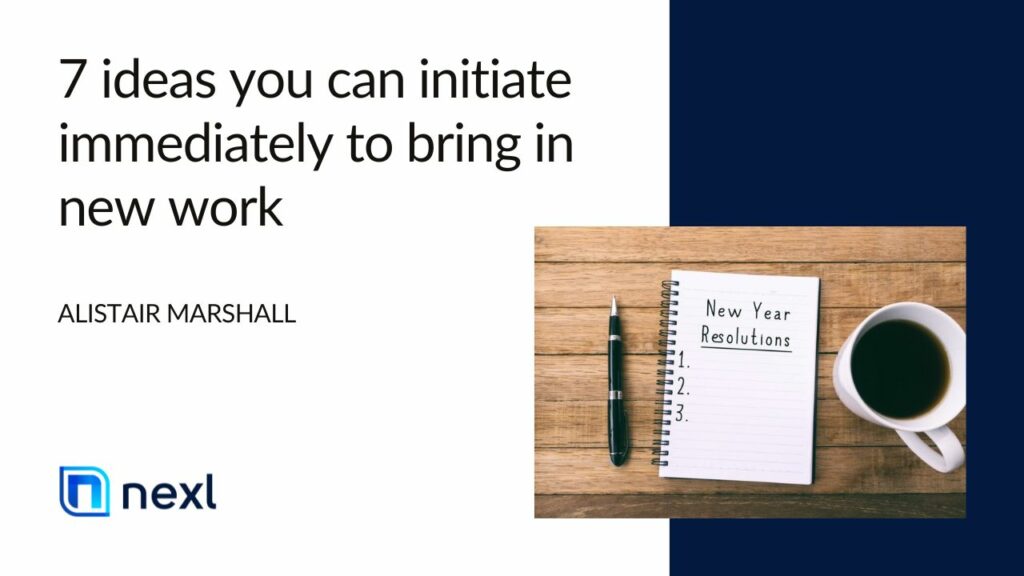Here is the final article in Ben Paul‘s 5-part series. And in many ways, it is where the rubber meets the road. Having established senior buy-in, created individualised BD Client Action plans, and recognised who should be doing the BD Coaching, it really is now simply a case of executing it, and measuring it.
Delivery should, in many ways, be a case of following the plans laid-out, but it also pays to run some launch programmes across the firm as well. This can help establish the platform for the programme’s success and helps to ensure firm-wide buy-in.
Measurement is much more than tracking revenue growth. While this is, in many cases, the main reason most firms undergo BD coaching, it shouldn’t be the focus when measuring and tracking success. Business Development is successful when activity is increased and is done in a consistent manner. Therefore, tracking the agreed upon activities should be the focus, as delivering on these will lead to an increase in revenue growth.
Below is a bit more detail on each part of the programme.
1. HOW TO DELIVER THE PROGRAMME
- Establish a launch event/communication
All new initiatives must be communicated internally across any law firm. Doing this creates an understanding as to why something is being done and gives clarity to individuals as to their roles within this initiative. It also sets out expectations and provides firm-wide clarity as to what your firm’s future ambitions are, which really does help create buy-in. This communication, be it in staff presentation or via email etc, must come from the senior leadership itself. The higher up the better. If the CEO or Managing Partner launches the programme, it has a much higher adoption rate.
- Regular group feedback to the mentees
Outside of the one-to-one sessions (online or in person) it is a really good idea to have team feedback. For larger firms this may be delivered in service line or even key client groups to share success stories and also to show the progress that is being made at a firm-wide level. These sessions also open up discussions amongst colleagues which leads to the all-powerful peer-to-peer internal coaching.
- Share success stories regularly across the firm
Lawyers, like anyone else, like to be recognised for their hard work and their achievements. As behaviours change, it is important these are recognised, and the successes held up. This helps others to recognise what good looks like and helps them to strive towards it.
- Report regularly to the Senior Leadership Team/Board
Having established senior buy-in for the programme you need to maintain it, so that the BD coaching programme does not lose its momentum. This means you will need to report on progress using the measurement tools established. Which leads me nicely into the second part of this final article on BD coaching programmes.
2. MEASURING YOUR COACHING
All programmes that a law firm is investing time, money and resources into should be tracked to see what ROI it is delivering. While individuals within a law firm will be able to see their progress against their individual plans, if you have 20 partners or fee-earners going through the programme, it will be impossible to use these individual plans to monitor success.
The first thing to do is to establish what important metrics your law firm will be tracking. These typically include measurements such as:
- Increase in client relationship meetings
- Meetings with prospective/new clients
- BD activities carried out (prospecting calls, emails, seminars etc.)
- Proposals submitted combined with win rate
- Partner/fee earner commitment to programme (this may require coaches to give feedback on those who seem unmotivated etc.)
- And finally, revenue
The final thing to do is agree on how you will track it. It can be tempting to use excel to record achievements or to go out to individuals to send feedback to a central source. These can work, but they are a tad inefficient. For any firm of a substantive size this will feel like herding cats to the person responsible for reporting. If you have a CRM or are looking at putting one in, they are made for helping you track programmes just like this, automatically. In many ways, it’s one of the many reasons Nexl and others exist, to help law firms measure and grow their client interactions.
Conclusion
I hope that you’ve enjoyed this five-part series on BD coaching and how to establish and deliver and effective BD coaching programme within law firms. It is my strong belief that those firms that are successful, and those that will continue to be successful, are the ones that have in place a culture of support for their fee-earners to help them establish the long term client relationships that they and the firm need.
Ben Paul is the Founder of The BD Ladder and is one of Nexl’s Business of Law’s Experts in Residence. If you have any questions regarding this 5 part series or if you would like to have a chat with Ben about anything to do with BD for law firms, then you can book an initial chat here. He’d love to hear from you.
READ THE FIRST ARTICLE: FROM THE TOP
READ THE SECOND ARTICLE: ACTION PLAN
READ THE THIRD ARTICLE: CLIENT CENTRIC CULTURE
READ THE FOURTH ARTICLE: EXTERNAL OR INTERNAL






